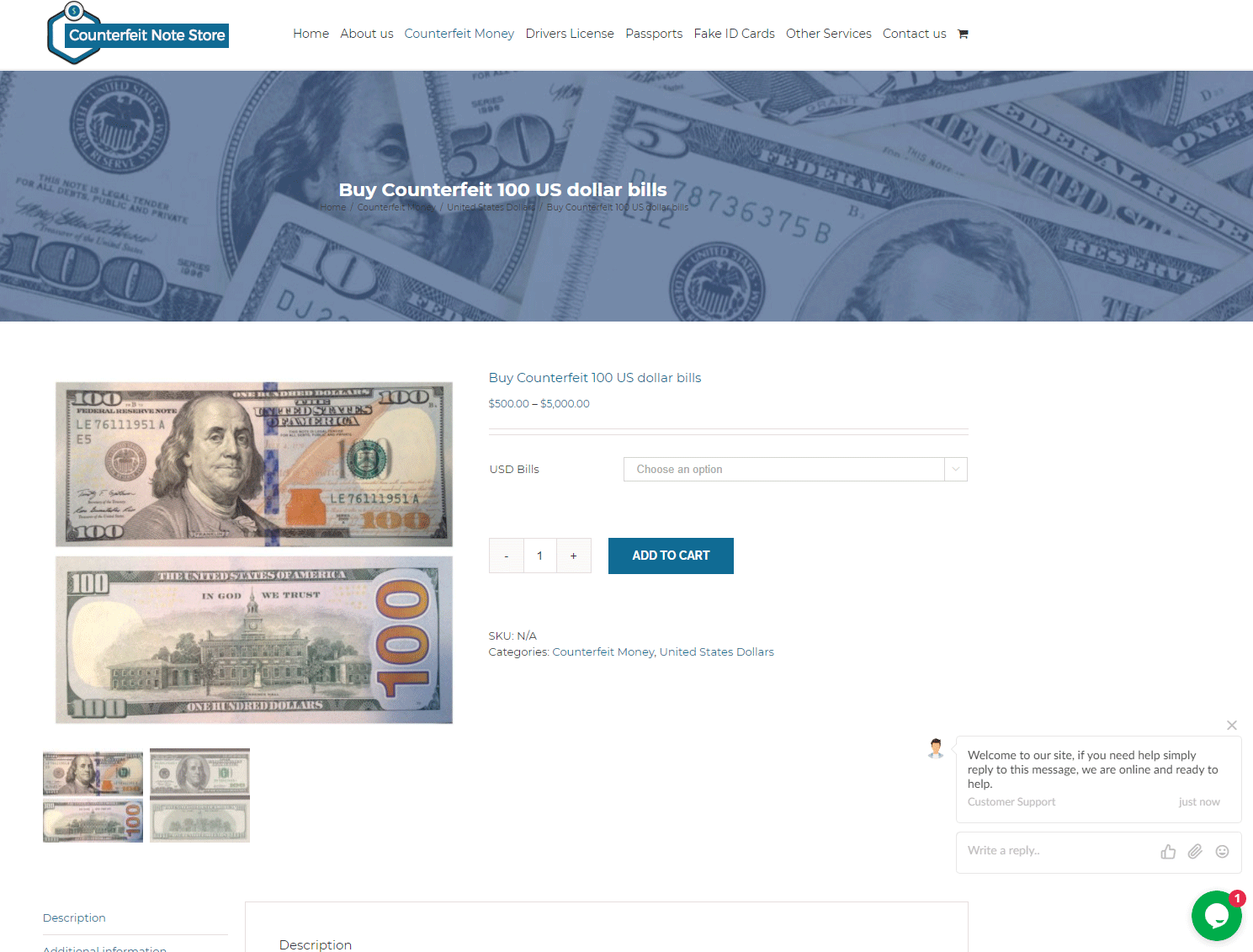
“Are you looking for a means to pay your accumulated bills, Buy items from local shops and big super markets, live a luxurious lifestyle as a millionaire, Travel to any country of your choice?, party and lodge in top 5 stars hotels around the world?”
Enter the strange world of the “Counterfeit Note Store” (CNS). Is this blatantly illegal website hidden in the gloomy recesses of the Dark Web? No. I googled what a 100 dollar bill looks like, and the image the CNS uses was on the first page. (This result has since been taken down, to the benefit of everyone except the CNS.) Throwing caution to the wind, I clicked the link. To the NSA, Google, and whomever else has destroyed my privacy online: I’ve clicked on worse.
I’ll bet (fake) money that this is a scam, and not a legitimate class C felony. Part of the magic is that the CNS website is the ruse, and not the funny money* that it hopes to (not actually) sell you. The website has a clean layout that looks so benign you could be buying a new toothbrush. You can even chat with a customer support representative. They guarantee their bills:
“...have all the required features that make them look authentic. … Our professional designers always do their best to make our fake hundred dollar bills be undetachable [sic].”
And here is where the scam starts to fall flat. No reputable disreputable company should have such poor writing. We have arrived at the heart of the con:
“You can pay for the purchase with cryptocurrencies as well as credit cards and MoneyGram. However, we recommend you to choose the first option as it’s one of the safest ways to make online payments.”
Ah, yes. I always use my credit card when committing felonies. (To the NSA, Google, and whomever else has destroyed my privacy online, that’s a joke.)
After falling down the rabbit hole of the CNS, I remembered that my original search was for an image of a $100 bill, not for a way to purchase 5,000 counterfeit bills for the low low price of $500.
Enter the U.S. Currency Education Program. Besides having play money coloring sheets, the government website has a breakdown of every bill's security features in beautiful graphics and videos. The U.S. Bureau of Engraving and Printing also has a step by step guide of the process of making a bill, from design to engraving to plate making to offset printing to inspection to packaging. (And if you’re like me and enjoy watching things get made, this video shows money being born.) The artistry isn’t in making a bill fake, but in making it genuine.

I don’t mean “artistry” in the abstract, I mean that currency is art. As script engraver Dixie March says, "There's not too many artists that can say they've had their work replicated billions of times."
The portrait is the most obvious work of art on a bill, but not the only one. Designs include the script, the symbols, the signatures, and the security measures. Although used primarily to stop counterfeiting, security measures add hidden charm to bills. And because each measure must be different, fascinating methods have been born. Take what the CNS describes simply as a “3D ribbon.” The U.S. Currency Education Program tells us to:
“Tilt the note back and forth while focusing on the blue ribbon. You will see the bells change to 100s as they move. When you tilt the note back and forth, the bells and 100s move side to side. If you tilt it side to side, they move up and down. The ribbon is woven into the paper, not printed on it.”
That is only one of around 10 security features, including seals, raised printing, microprinting, holograms, watermarks, “symbols of freedom,” and paper that “is one-fourth linen and three-fourths cotton, and contains red and blue security fibers.” If a urinal can be art, the $100 bill can be art. Although if you’re still not convinced, you can at least turn bills into origami.
BONUS FACTS
It’s fitting that Benjamin Franklin’s face became a security measure; it's used on the $100 bill as a watermark, a place for microtext, and uses special raised ink. To stop counterfeits, in 1739 his Philadelphia printing company produced colonial notes with raised patterns cast from actual leaves.
The estimated lifespan (the time in circulation) of a $100 bill is around 23 years, with $1,424.7 billion worth of $100 bills in circulation (as of 2019).
The Secret Service was formed in 1865 to fix a counterfeiting crisis, with reports that one third of all currency was fake. Currency is still handled in part by the Secret Service, along with the Federal Reserve Board, the Federal Reserve Banks, and the Department of the Treasury’s Bureau of Engraving and Printing.
*The CNS does not only sell counterfeit money, they also sell fake: driver’s licenses, passports, ID cards, SSN cards, birth certificates, and more!
